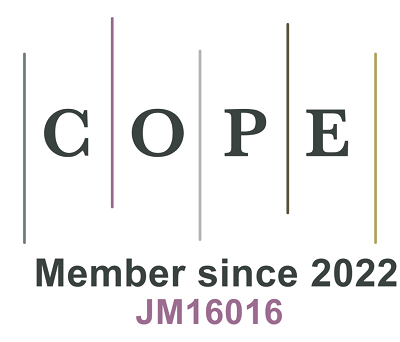REFERENCES
1. Wan XY, Chen J, Wang JW, Liu YC, Shu K, Lei T. Overview of the 2022 WHO classification of pituitary adenomas/pituitary neuroendocrine tumors: clinical practices, controversies, and perspectives. Curr Med Sci. 2022;42:1111-8.
2. Lleva RR, Inzucchi SE. Diagnosis and management of pituitary adenomas. Curr Opin Oncol. 2011;23:53-60.
3. Mello PA, Naves LA, Pereira Neto A, et al. Clinical and laboratorial characterization and post-surgical follow-up of 87 patients with non-functioning pituitary macroadenomas. Arq Neuropsiquiatr. 2013;71:307-12.
4. Wan XY, Li LH, Chen J, et al. Surgical technique and efficacy analysis of extra-pseudocapsular transnasal transsphenoidal surgery for pituitary microprolactinoma. Curr Med Sci. 2022;42:1140-7.
7. Naelitz B, Shah A, Nowacki AS, et al. Prolactin-to-testosterone ratio predicts pituitary abnormalities in mildly hyperprolactinemic men with symptoms of hypogonadism. J Urol. 2021;205:871-8.
8. Xu Y, Wan XY, Li LH, et al. Extra-pseudocapsular transnasal transsphenoidal resection of pituitary macroadenoma: technique note and evaluation of endocrine function. Curr Med Sci. 2022;42:1148-56.
9. Jiao W, Huang Y, Sun W, Lei T. Microscopic transnasal transsphenoidal surgery for pediatric pituitary adenomas. J Craniofac Surg. 2017;28:1010-2.
10. Chen J, Guo X, Miao Z, et al. Extra-pseudocapsular transsphenoidal surgery for microprolactinoma in women. J Clin Med. 2022;11:3920.
11. Al Dahmani KM, Almalki MH, Ekhzaimy A, et al. Proportion and predictors of hypogonadism recovery in men with macroprolactinomas treated with dopamine agonists. Pituitary. 2022;25:658-66.
12. Nomikos P, Ladar C, Fahlbusch R, Buchfelder M. Impact of primary surgery on pituitary function in patients with non-functioning pituitary adenomas -- a study on 721 patients. Acta Neurochir. 2004;146:27-35.
13. Buchfelder M, Schlaffer SM, Zhao Y. The optimal surgical techniques for pituitary tumors. Best Pract Res Clin Endocrinol Metab. 2019;33:101299.
14. Snyder PJ. Symptoms of late-onset hypogonadism in men. Endocrinol Metab Clin North Am. 2022;51:755-60.
15. Zhang X, Zhong Y, Saad F, et al. Testosterone therapy may reduce prostate cancer risk due to testosterone deficiency at a young age via stabilizing serum testosterone levels. Aging Male. 2020;23:112-8.
16. Lu L, Wan X, Xu Y, Chen J, Shu K, Lei T. Classifying pituitary adenoma invasiveness based on radiological, surgical and histological features: a retrospective assessment of 903 cases. J Clin Med. 2022;11:2464.
17. Lu L, Wan X, Xu Y, Chen J, Shu K, Lei T. Prognostic factors for recurrence in pituitary adenomas: recent progress and future directions. Diagnostics. 2022;12:977.
18. Knosp E, Steiner E, Kitz K, Matula C. Pituitary adenomas with invasion of the cavernous sinus space: a magnetic resonance imaging classification compared with surgical findings. Neurosurgery. 1993;33:610-7.
19. Buchfelder M, Fahlbusch R, Adams EF, Kiesewetter F, Thierauf P. Proliferation parameters for pituitary adenomas. In: Fahlbusch R, Bock WJ, Brock M, Buchfelder M, Klinger M, Editors. Modern neurosurgery of meningiomas and pituitary adenomas. Vienna: Springer; 1996. pp. 18-21.
20. Buchfelder M, Schlaffer SM. Surgical treatment of aggressive pituitary adenomas and pituitary carcinomas. Rev Endocr Metab Disord. 2020;21:253-61.
21. Yan Z, Lei T. Hypogonadism in male patients with pituitary adenoma and its related mechanism: a review of literature. Brain Sci. 2022;12:796.
22. Sibal L, Ugwu P, Kendall-Taylor P, et al. Medical therapy of macroprolactinomas in males: I. Prevalence of hypopituitarism at diagnosis. II. Proportion of cases exhibiting recovery of pituitary function. Pituitary. 2002;5:243-6.
23. Hauger RL, Saelzler UG, Pagadala MS, Panizzon MS. The role of testosterone, the androgen receptor, and hypothalamic-pituitary-gonadal axis in depression in ageing men. Rev Endocr Metab Disord. 2022;23:1259-73.
25. Comninos AN, Dhillo WS. Emerging roles of kisspeptin in sexual and emotional brain processing. Neuroendocrinology. 2018;106:195-202.
26. McHenry J, Carrier N, Hull E, Kabbaj M. Sex differences in anxiety and depression: role of testosterone. Front Neuroendocrinol. 2014;35:42-57.
27. Sehemby M, Lila AR, Sarathi V, et al. Predictors of chronic LH-testosterone axis suppression in male macroprolactinomas with normoprolactinemia on cabergoline. J Clin Endocrinol Metab. 2020;105:e4551-7.
28. Zhou WJ, Liu C, Jia W, et al. Effect of pituitary adenomas on male sexual function: a multivariate analysis. Chin J Neurosurg. 2016;32:771-5.
29. Wildemberg LE, Glezer A, Bronstein MD, Gadelha MR. Apoplexy in nonfunctioning pituitary adenomas. Pituitary. 2018;21:138-44.
30. Zhu Q, Liang Y, Fan Z, et al. Ischemic infarction of pituitary apoplexy: a retrospective study of 46 cases from a single tertiary center. Front Neurosci. 2021;15:808111.
31. Wang Z, Gao L, Wang W, et al. Coagulative necrotic pituitary adenoma apoplexy: a retrospective study of 21 cases from a large pituitary center in China. Pituitary. 2019;22:13-28.
32. Rajasekaran S, Vanderpump M, Baldeweg S, et al. UK guidelines for the management of pituitary apoplexy. Clin Endocrinol. 2011;74:9-20.
33. Jho DH, Biller BM, Agarwalla PK, Swearingen B. Pituitary apoplexy: large surgical series with grading system. World Neurosurg. 2014;82:781-90.
34. Dabbous Z, Atkin SL. Hyperprolactinaemia in male infertility: clinical case scenarios. Arab J Urol. 2018;16:44-52.
35. Rudman Y, Duskin-Bitan H, Manisterski Y, et al. Long-term response to cabergoline and multi-modal treatment in men with macroprolactinoma: does size really matter? Clin Endocrinol. 2021;95:606-17.
36. Kinoshita Y, Tominaga A, Usui S, et al. The surgical side effects of pseudocapsular resection in nonfunctioning pituitary adenomas. World Neurosurg. 2016;93:430-5.e1.
37. Fahlbusch R, Ganslandt O, Buchfelder M, Schott W, Nimsky C. Intraoperative magnetic resonance imaging during transsphenoidal surgery. J Neurosurg. 2001;95:381-90.
38. Berkmann S, Schlaffer S, Nimsky C, Fahlbusch R, Buchfelder M. Intraoperative high-field MRI for transsphenoidal reoperations of nonfunctioning pituitary adenoma. J Neurosurg. 2014;121:1166-75.









